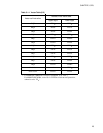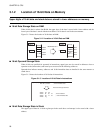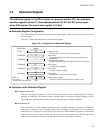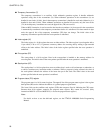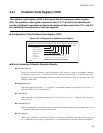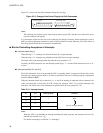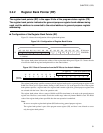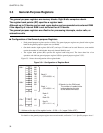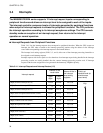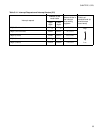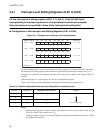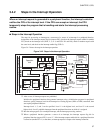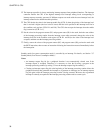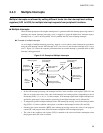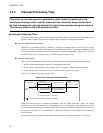33
CHAPTER 3 CPU
■
Features of the General-purpose Registers
The general-purpose registers have the following features:
• High-speed access with short instructions (general-purpose register addressing)
• Register banks (in blocks) that allow data to be easily conserved and partitioned in the unit of function
The general-purpose registers allow specific register banks to be statically assigned with the interrupt
processing routine or vector call (CALLV #0 to #7) processing routine. For example, it can be used such
that the fourth register bank is always used for the second interrupt.
For interrupts, unless data in a specific register bank that corresponds to an interrupt processing is
incorrectly overwritten by another routine, simply specifying the specific register bank at the beginning of
the interrupt processing routine stores the data contained in the general-purpose registers before
interruption. This feature allows data in general-purpose registers to avoid being put in the stack and allows
interrupts to be handled efficiently at high speed.
For subroutine calls, in addition to conservation of data in general-purpose registers, the register banks can
implement re-entrant programs (reloadable programs with variable addresses unfixed) that are usually
created using the index register (IX) or another function.
Note:
A program must be created so that the values of the interrupt level bits in the condition code register
(CCR: IL1 and IL0) do not change when the register bank pointer (RP) is rewritten to specify a register
bank in the interrupt processing routine.



